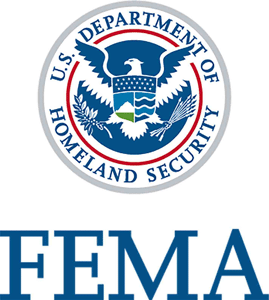The social roots of risk : producing disasters, promoting resilience /
Material type: TextSeries: Publisher: Stanford, California : Stanford Business Books, an imprint of Stanford University Press, 2014Description: xiii, 301 pages ; 24 cmContent type:
TextSeries: Publisher: Stanford, California : Stanford Business Books, an imprint of Stanford University Press, 2014Description: xiii, 301 pages ; 24 cmContent type: - text
- unmediated
- volume
- S RISK.010 TieK 2014 ASFPM
| Item type | Current library | Call number | Status | Date due | Barcode | Item holds |
|---|---|---|---|---|---|---|
 Books
Books
|
ASFPM Library | RISK.10.TieK 2014 ASFPM (Browse shelf(Opens below)) | Available | 000927 |
Browsing ASFPM Library shelves Close shelf browser (Hides shelf browser)
No cover image available

|

|
No cover image available

|
No cover image available

|
No cover image available

|
No cover image available

|
|||
| POLI.10.ZimD1997 Robert's Rules in plain English / | RISK.10.ASFPM2012 Flood risk management: the winning ticket: proceedings of the 35th annual conference Association of State Floodplain Managers | RISK.10.CutS1999 South Carolina atlas of environmental risks and hazards | RISK.10.TieK 2014 ASFPM The social roots of risk : producing disasters, promoting resilience / | RISK.40.FEMA2004 FEMA Risk Assessment Workshop: Instructor Resource Kit | RISK.40.FEMA22004 FEMA Risk Assessment Workshop: Student Resource Kit | S FLOD.130.b.e.c.02 ASFPM 2003.1 ASFPM Effective state floodplain management programs / |
Includes bibliographical references (pages 253-271) and index.
Risking more, losing more : thinking about risk and resilience -- Looking back : the evolution of how we talk about risk -- A different perspective : the social production of risk -- Culture and the production of risk -- Organizations, institutions, and the production of risk -- Communities and societies at risk -- Defining resilience in relation to risk -- Adaptive resilience in the face of disasters -- Looking ahead : a move toward safety, or more of the same?
Staff. Public.
From back cover- The first decade of the 21st century saw a remarkable number of large-scale disasters. Earthquakes in Haiti and Sumatra underscored the serious economic consequences that catastrophic events can have on developing countries, while 9/11 and Hurricane Katrina showed that first world nations remain vulnerable.
The Social Roots of Risk argues against the widespread notion that cataclysmic occurrences are singular events, driven by forces beyond our control. Instead, Kathleen Tierney contends that disasters of all types—be they natural, technological, or economic—are rooted in common social and institutional sources. Put another way, risks and disasters are produced by the social order itself—by governing bodies, organizations, and groups that push for economic growth, oppose risk-reducing regulation, and escape responsibility for tremendous losses when they occur.
Considering a wide range of historical and looming events—from a potential mega-earthquake in Tokyo that would cause devastation far greater than what we saw in 2011, to BP's accident history prior to the 2010 blowout—Tierney illustrates trends in our behavior, connecting what seem like one-off events to illuminate historical patterns.
Like risk, human resilience also emerges from the social order, and this book makes a powerful case that we already have a significant capacity to reduce the losses that disasters produce. A provocative rethinking of the way that we approach and remedy disasters, The Social Roots of Risk leaves readers with a better understanding of how our own actions make us vulnerable to the next big crisis—and what we can do to prevent it.
Protected by copyright law.


There are no comments on this title.